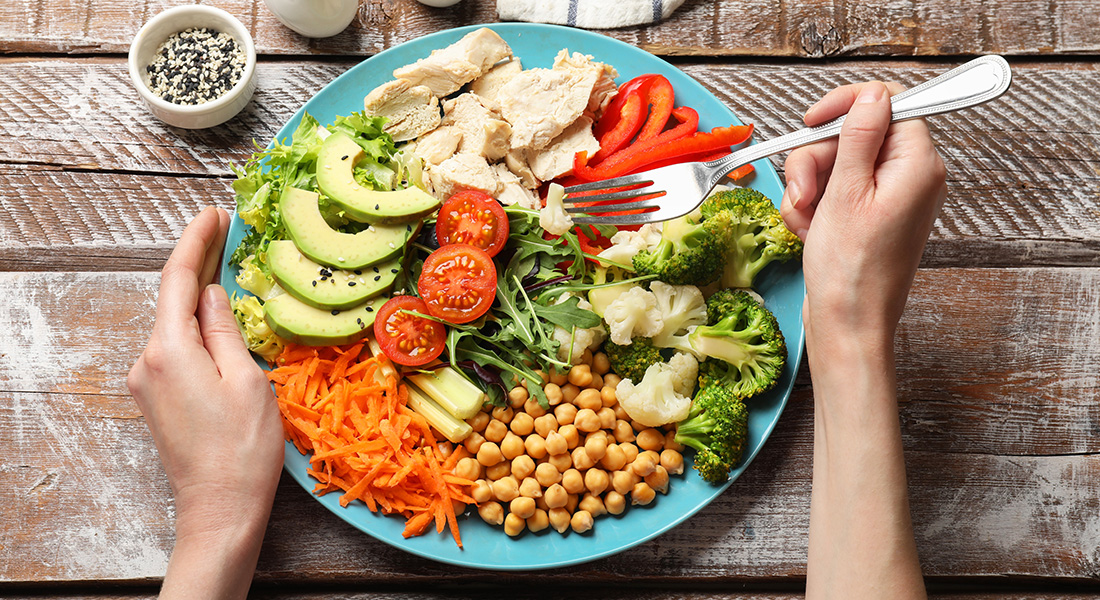What should I eat to stay healthy? Four-million-euro research project GLUCOTYPES is looking for answers
A team of scientists from five European countries will adopt the latest advances in wearable technologies, molecular biology, and bioinformatics, to identify individuals with distinct patterns of blood glucose alterations who respond differently to diet. The GLUCOTYPES project – supported with 4 million euro from the European Innovation Council – is led by scientists at the University of Copenhagen to generate new knowledge that could lead to more efficient approaches for preventing cardiometabolic disease.

Type 2 diabetes is a major public health challenge, affecting 1 in 10 people and causing over 114,000 deaths each year in Europe alone. Despite plenty of research, we still don’t fully understand the different ways this disease can develop, or how our diet affects our body’s ability to control blood sugar levels. This lack of knowledge means we don’t have effective ways to prevent type 2 diabetes.
Now, a team of scientists from five European countries and six institutions will apply their expertise in nutrition and metabolism, the gut microbiome, glycoproteomics, and machine learning to tackle this challenge. The team hopes to identify patterns of early deviations in blood sugar levels, a concept they called “glucotypes”. This knowledge could advance our understanding of how diabetes develops and lay the groundwork for future strategies to prevent type 2 diabetes, improving the lives of all people affected by the disease.
"With 1 in 10 people worldwide affected by diabetes, the need for a more nuanced approach to prevention and treatment is critical," says GLUCOTYPES lead investigator Associate Professor Jordi Merino from the NNF Center for Basic Metabolic Research (CBMR) at the University of Copenhagen.
Paving the way for precision nutrition strategies
The team plans to discover and characterize glucotypes using continuous glucose monitors and detailed personal information. The scientists will then use advanced molecular biology and bioinformatic techniques to investigate whether glucotypes have a shared molecular signature. Finally, the scientists will apply machine learning approaches to explore how diet and glucotypes affect health and to understand the specific molecular mechanisms by which diet influences blood glucose levels.
“We already know that there a link between the food we eat and the complex glycans consisting of strings of sugars, which coat our cells. It is our hope that our sophisticated glycan profiling will reveal shared molecular signatures of diabetes that will help us develop strategies to improve the detection and prevention of type 2 diabetes," says Professor Hans Wandall from the Copenhagen Center for Glycomics at the University of Copenhagen.
The insights gained from this work will be used to design a clinical trial to test the effectiveness of personalized diets on cardiometabolic health and to identify markers that indicate a positive response to the diet. The scientists hope that the research will shed more light on the different factors that influence early changes in blood sugar levels and how specific diets could improve these changes.
"This groundbreaking initiative brings together top minds across Europe to unlock the very early stages of glucose alterations and pave the way for precision nutrition strategies. By leveraging continuous monitoring, advanced molecular biology techniques, and machine learning approaches, GLUCOTYPES has the potential to generate knowledge for revolutionising cardiometabolic disease prevention, offering hope for millions," says Associate Professor Jordi Merino.
GLUCOTYPES brings together scientists from the University of Copenhagen, Maastricht University, Leiden University, Universidad Santiago de Compostela, Weizmann Institute, and ILSI Europe. Participants from the University of Copenhagen include Professor Ruth Loos, Professor Simon Rasmussen, and Associate Professor Jordi Merino from CBMR and Hans Wandall from the Copenhagen Center for Glycomics.
